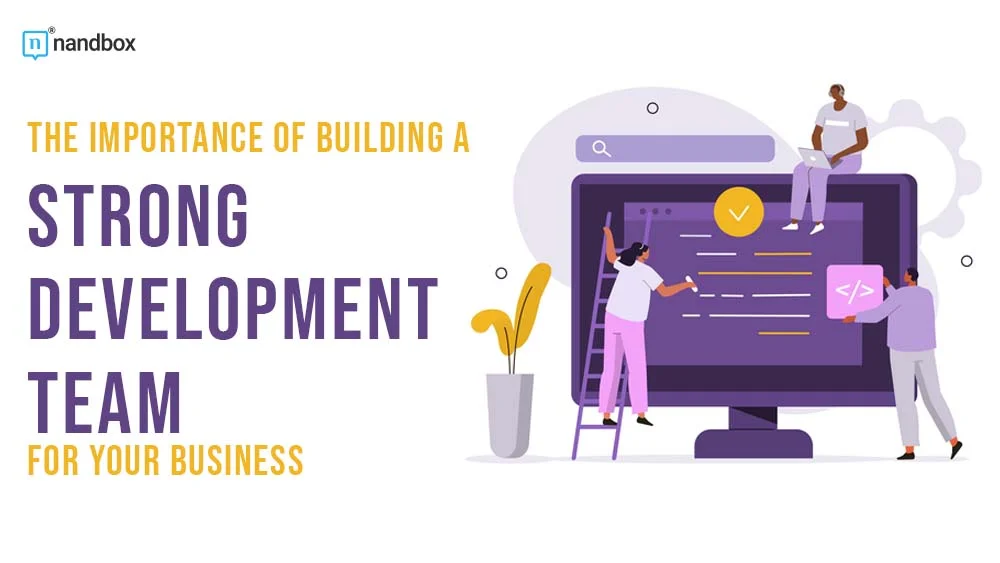Nurturing Talent: Building a Strong Development Team
In an age of digital transformation, having a robust agile software development team is fundamental to business success. Software development, specifically custom computer vision software development, is critical to optimizing operational processes, stimulating innovation, and pushing growth boundaries. This article will dissect why businesses should invest in constructing a vibrant software development team and the approach to hiring the right talent, fostering a positive team culture, and establishing effective team processes.
Benefits of Having a Strong Software Development Team
When empowered with the right skills, vision, and resources, a robust software development team is a game-changer. Such a team promises many benefits, such as quality products or services, reduced project timelines, increased innovation, and enhanced customer satisfaction. This is particularly true for custom computer vision software development, a niche yet expanding avenue that deals with how computers can gain high-level understanding from digital images or videos. Having a team that masters this technique translates to better product features, optimized processes, and competitive advantage in the marketplace.
Hiring the Right Team Members
Choosing the right people for your team can differentiate between success and failure. Here’s how to ace the hiring process:
Identifying the Skills and Expertise Needed
Before writing a job description, businesses must identify the specific skills required for the project or role. For instance, in custom computer vision software development, expertise in machine learning, programming languages like Python or C++, and familiarity with libraries like OpenCV may be sought.
Setting Clear Job Requirements and Expectations
The job description should be unambiguous and comprehensive. Clearly define the role, responsibilities, desired qualifications, and expectations. It might be worthwhile to require candidates to take the BDUF (Big Design Up Front) approach, a popular practice in software development.
Conducting Effective Interviews
Interviewing is more than confirming what’s on a candidate’s resume. It’s about finding a cultural fit and an individual who aligns with the company’s vision and mission. Questioning techniques like behavioral interviewing or problem-solving scenarios help ascertain a candidate’s capabilities, approach, and fit. Using interview transcription software can also streamline the hiring process by accurately capturing and analyzing responses during interviews. This utilizes speech-to-text technology to transcribe spoken words into written text, allowing recruiters to review and assess candidate responses more efficiently.
Fostering a Positive Team Culture
Building a Community and Collaboration
Creating a sense of community within the team fuels motivation and productivity. Encourage team activities and foster an environment that supports collaboration. Open floor plans, collaborative software or tools, and regular team-building activities are a few practices that can help.
Encouraging Open Communication and Feedback
Transparent communication is the backbone of a successful team. Providing channels for feedback, addressing concerns promptly, and maintaining an open-door policy is vital in building trust within the team. This framework ensures that all team members feel valued, leading to increased satisfaction and productivity.
Nurturing Professional Growth and Development
Making investments in your team’s professional development benefits all parties involved. Whether sponsoring certification courses, providing resources for self-learning, or offering internal training sessions, these steps help employees enhance their skills, leading to personal growth and boosting the team’s overall performance.
Establishing Effective Team Processes
Defining Roles and Responsibilities
Without clear roles and responsibilities, team operations tend to descend into chaos. A RACI matrix—Responsible, Accountable, Consulted, and Informed—is useful for assigning and tracking task roles and responsibilities.
Setting Clear Goals and Objectives
Goals give the team a clear direction. Whether it’s the ‘Big Hairy Audacious Goal’ (BHAG) concept or the ‘SMART’ (Specific, Measurable, Assignable, Realistic, Time-related) goals approach, having clear, agreed-upon objectives helps streamline team efforts and focus.
Efficient Workflows and Project Management Tools
In this digital age, harnessing the power of project management tools is a boon. Trello, Jira, or Asana can streamline workflows, track project progress, and facilitate better collaboration. Select a tool that best fits the nature and scale of your projects and make it an integral part of your team processes.
Real-World Examples of Companies
Real-world examples of companies that have successfully implemented custom computer vision software in their business operations:
- TechAhead: TechAhead, a company with experts adept at developing computer vision systems for multiple industries like sports, retail, and manufacturing, showcases the significance of having a skilled and specialized development team for creating customized computer vision solutions.
- Augury: Augury offers comprehensive solutions to minimize production downtime, enhance process efficiency, optimize yield, and mitigate waste and emissions. Through AI-driven technology and computer vision, they empower their customers with prescriptive insights into their processes and machines.
- Navan.ai: Navan.ai is a no-code platform for building Computer Vision models. It allows you to build computer vision models in minutes, not days.
- Neurala: Neurala is a company that offers vision AI software using their patented Lifelong-Deep Neural Network (L-DNN) technology. Their software can be easily integrated into existing production line infrastructure, providing cost-effective solutions for quality inspection automation.
- SmartClick: SmartClick is a full-service software provider offering businesses Artificial Intelligence and Machine Learning solutions. It combines industry knowledge with data-driven solutions to deliver excellence and enhanced business value.
These examples demonstrate how having a solid software development team with expertise in custom computer vision software development can lead to innovative solutions, improved communication, problem-solving skills, time management, and decision-making capabilities, ultimately driving business success and growth.
Conclusion
Building a robust development team, especially one proficient in disciplines like custom computer vision software development, is equivalent to investing in the business’s future. The right mix of skill, culture, and process efficiency doesn’t just build a team – it creates an army ready to embrace and conquer any business problem or opportunity that lies ahead.
Creating a dynamic development team is not a one-off task; it requires continuous effort and evolution. To ensure you set your team up for success, keep iterating your hiring strategies, foster an environment of constant learning and open communication, and empower your team with efficient tools. As Richard Branson famously said, “Take care of your employees, and they’ll take care of your business.”
Citations:
[1] https://www.techaheadcorp.com/knowledge-center/computer-vision-can-transform-businesses/
[2] https://www.omdena.com/blog/edge-computer-vision-companies
[3] https://viso.ai/computer-vision/most-popular-computer-vision-companies-and-startups/
[4] https://www.linkedin.com/pulse/top-10-companies-computer-vision-market-2024-premium-insight-bvzte
[5] https://www.inven.ai/company-lists/top-23-computer-vision-companies






